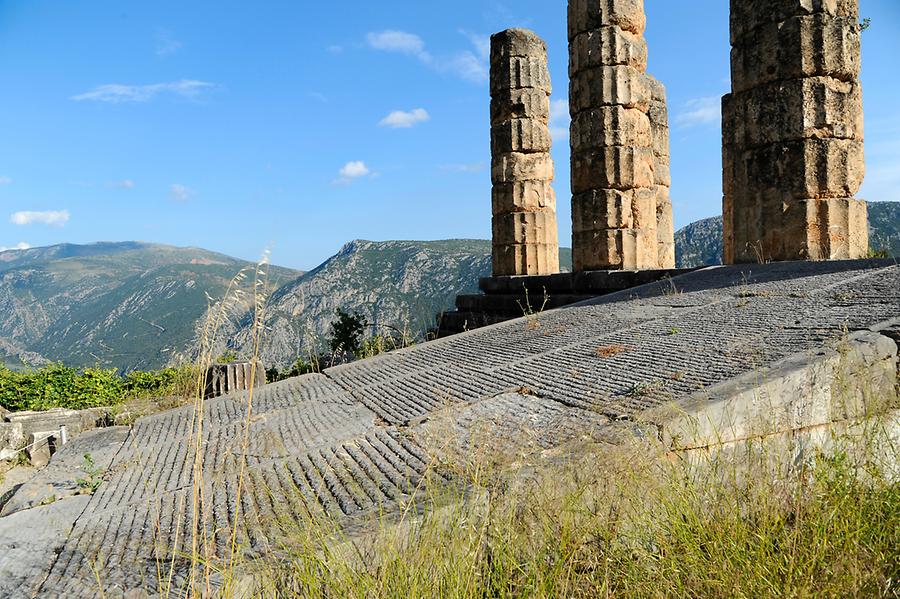

The Delphic ὀμφαλός is not at the centre of the earth, nor is the navel in the centre of the human body.

#TEMPLE OF DELPHI HOW TO#
The passage is a very curious one: it was to me unintelligible, but Professor Jebb has kindly shown me how to translate it without any tampering with the received text: what Varro seems to say is this-”The umbilicus ( ὀμφαλός) at Delphi is said to be so called from the human navel, because it is at the centre of the earth, as the navel is of our bodies. 17) appears not only to ridicule that belief, but also asserts that the navel is not the centre of the human body. note 1 In spite of the reproof administered by Apollo to Epimenides of Phaestus for denying that the Omphalos was the earth's centre (Plut. Google Scholar Herodes Atticus, the munificent benefactor of Athens, expended part of his immense wealth at Delphi, where he covered the stadium with Pentelic marble Paus. The view from Pylaea, which is even finer and more commanding than that from Delphi, extends over the fertile plain from Amphissa to the harbour at Cirrha, as is described by Aeschines,, con. Remains there still exist of fine buildings of the second century A.D., among them drums of columns 6′ 3″ in diameter, which must have belonged to some important building. 29) that Pylaea at the time of his writing was more magnificent with its temples, public buildings, and fountains than it had ever been in the past thousand years. The revival of the glories of Delphi extended to Pylaea, about a mile distant, the meeting-place of the Amphiktionic Council. has Hadrian raising a kneeling female figure, who represents Greece treated in an allegorical way. note 3 Called on some of his coins ‘Restitutor Achaiae,’ from his munificence to many Greek cities. It was not till later times that the bright Phoebus Apollo came to Delphi to slay the earth-born Python, just as the rising sun dissipates the shadows in the depths of the Delphian ravines, or as in the Indian legend the god Indra kills with his bright arrows the great serpent Ahi-symbol of the black thunder-cloud. Thus at Delphi the primitive worship was that of the gloomy Earth and her children, the chasm-rending Poseidon, and the Chthonian Dionysus, who, like Osiris, was the victim of the evil powers of Nature. In an early stage of development the mind of man tends to gloomy forms of religion: his ignorance and comparative helplessness tend to fill his brain with spiritual terrors and forebodings. In primitive times it was the awfulness of Nature which impressed itself on the imaginations of the inhabitants. The lofty precipices, the dark deeply-cleft ravines, the mysterious caves, and the bubbling springs of pure water, combine to give the place a romantic charm and a fearfulness of aspect which no description can adequately depict.Īgain Delphi stands alone in the catholic multiplicity of the different cults which were there combined. In many respects Delphi and its varied cults possess an interest which is not to be rivalled by that of any other Hellenic site.


 0 kommentar(er)
0 kommentar(er)
